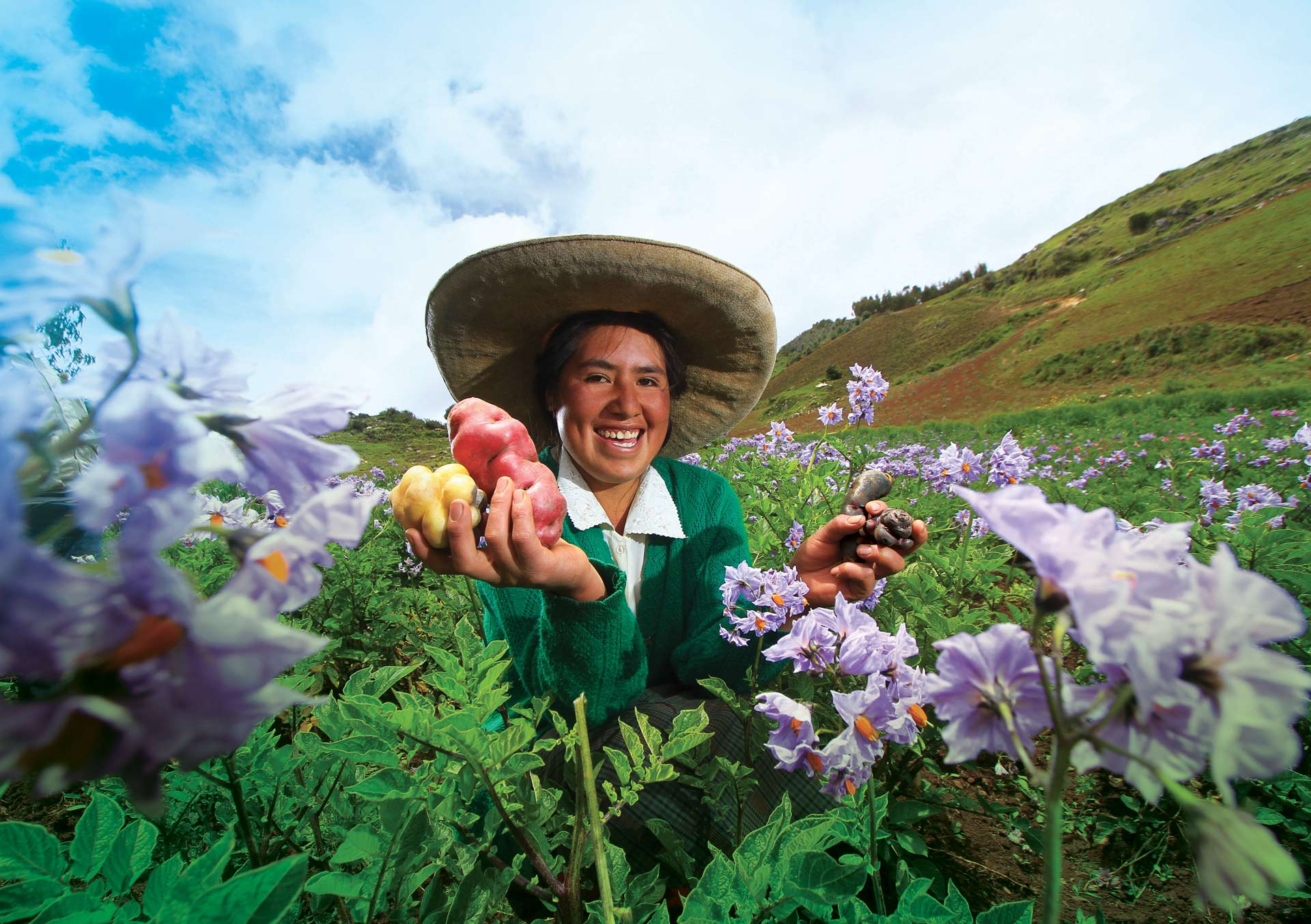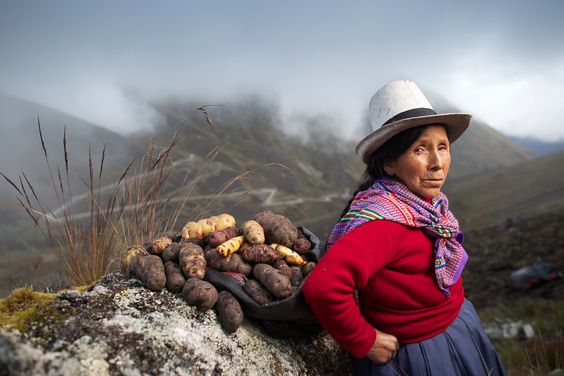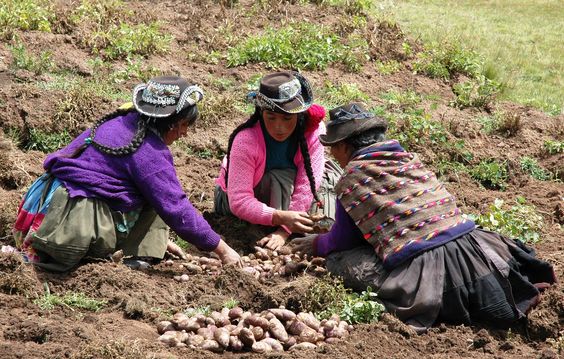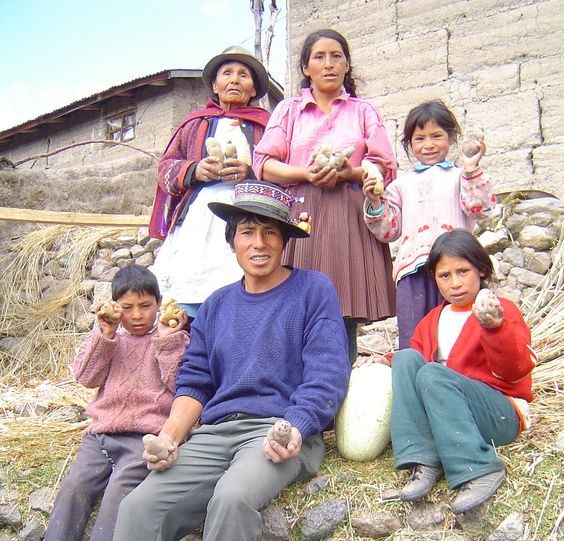Donor: CARE, The European Union, The International Fund for Agricultural Development, Ministry of Agriculture Peru
Country/Region: Peru/Latin America
Reducing Malnutrition in Peru
Despite strong economic growth over the past two decades, approximately 22% of Peru’s population lives in poverty; 4% in extreme poverty. Nearly all of the extreme poverty is found in predominantly indigenous rural Peru, where an estimated 28% of children suffer chronic malnutrition and 40% are anemic.
CIP has partnered with the international development organization CARE in the Puno region and with Peru’s Ministry of Agriculture’s through their AGRORURAL program in the highland communities of Cajamarca and Lima regions. Both projects aim to reduce malnutrition and improve incomes by promoting the cultivation and consumption of native potato varieties with high levels of zinc and iron while encouraging more balanced diets through nutrition education.


Photo: Courtesy of Jim Richardson
In the Puno region, where the project is funded by The European Union, and administered by the Andean Community, agronomists supported by CIP have helped farmers evaluate various zinc-and-iron-rich native potato varieties using participatory varietal selection, to determine which ones are best for local conditions. The project also produced materials on child nutrition and delivered nutrition training to rural women at 48 community health posts in 2016, while contributing to a regional nutritional and food security plan. At the same time, technicians provided training in appropriate farming practices while helping farmers find better markets for their native potatoes and produce a popular dried potato product called tunta for additional income.
The project in the highlands of the Cajamarca and Lima regions, which is supported by the International Fund for Agricultural Development (IFAD), has also provided training in nutrition and market chains, as well as seed potato production, integrated pest management and sustainable agriculture, to strengthen farm resiliency in the face of climate change. Miguel Ordinola, who coordinates CIP Projects in Peru, noted that farmers in the Lima highlands have the advantage of living relatively close to the capital, which facilitates their ability to access new markets.
The market for native potatoes has grown steadily over the past decade, largely thanks to CIP’s regional Papa Andina project (2003-2012). Under Papa Andina, CIP created a coalition in Peru called ‘Potato Innovation and Competitiveness’ (INCOPA), which brought together representatives of government institutions and businesses – supermarkets, restaurants, packaged snack manufacturers and exporters – to build new markets and value chains for native potatoes.


Ordinola observed that before Papa Andina, neither native potatoes nor chips were sold in Lima, nor were they exported. Now those colorful potatoes and chips can be found in grocery stores on several continents and on the menus of Peru’s best restaurants.
Papa Andina resulted in greater potato production and consumption in Peru, and a 30% increase in prices, and the market for native potatoes continues to grow. “Papa Andina is a good example of how innovation can create value and facilitate the development of value chains by the private sector,” Ordinola said.
CIP’s current efforts in the Peruvian highlands are strengthened by favorable market conditions and the knowledge that CIP researchers gained over the past 15 years about native potatoes, factors that contribute to malnutrition and the importance of combining farmer training with health education.
“Many of the lessons we’ve learned over the years are now helping us to achieve results in less time,” Ordinola said.

